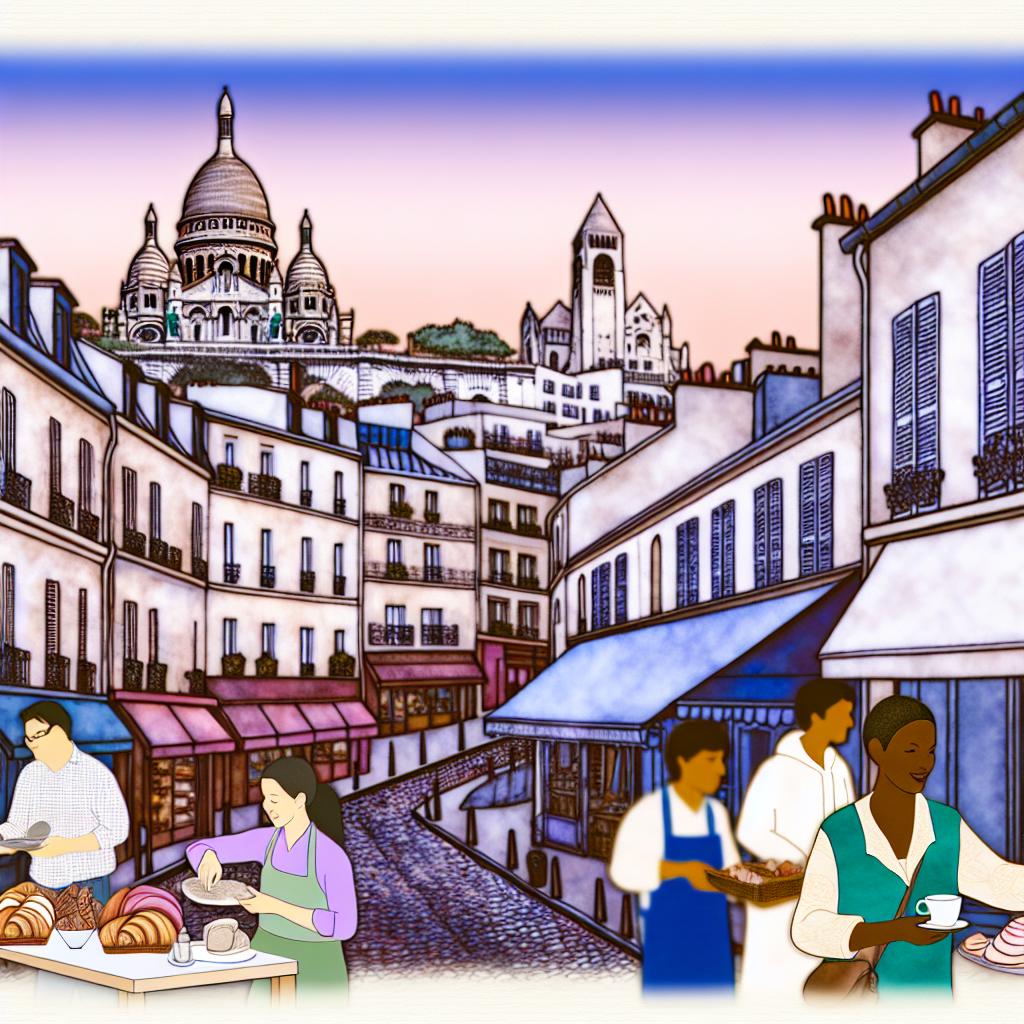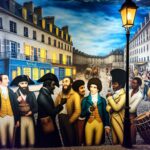Introduction to Montmartre
Montmartre is a historical district located in the northern part of Paris, France. Known for its bohemian past and vibrant arts scene, Montmartre has been a source of inspiration for many artists and writers throughout history. This area is characterized by its charming cobblestone streets, inviting plazas, and cultural landmarks.
Geographical Features
Montmartre is situated atop a prominent hill, providing panoramic views of the city. Its elevation, combined with the lush greenery of the area, offers a refreshing escape from the urban landscape below. The district’s iconic landmark, the Sacré-Cœur Basilica, stands at the top of this hill, drawing visitors from around the world.
Flora and Fauna
Despite being an urban environment, Montmartre features pockets of green spaces, including small gardens and vineyards. While these areas are modest, they contribute to the area’s distinct charm. The flora includes grapevines, which are remnants of historical winemaking practices. These natural features provide habitats for various bird species and small mammals.
Historical Significance
Montmartre has played a pivotal role in the development of modern art. In the late 19th and early 20th centuries, it was the epicenter of avant-garde movements and home to many renowned artists such as Pablo Picasso and Henri Toulouse-Lautrec. The legacy of this artistic community continues to influence the cultural fabric of Montmartre today.
Artistic Heritage
The district contains several museums and galleries showcasing the work of its past and contemporary artists. The Musée de Montmartre is a notable institution dedicated to preserving and promoting the area’s artistic legacy. This museum holds numerous exhibitions, providing insight into Montmartre’s vibrant art scene.
Cultural Landmarks
Apart from the Sacré-Cœur, Montmartre boasts several other cultural sites. The Moulin Rouge, a world-famous cabaret, exemplifies the area’s lively entertainment history. Additionally, the district’s numerous bistros and cafes embody Parisian dining culture and offer traditional French cuisine.
Impact on Tourism
Due to its rich history and unique atmosphere, Montmartre attracts millions of tourists annually. Visitors are drawn to its picturesque streets, historical sites, and artistic heritage. The bustling Place du Tertre, known for its street artists and portrait painters, remains a vibrant center of attraction.
The Architectural Essence of Montmartre
Walking through Montmartre gives a sense of stepping back in time. The architecture largely retains its historical authenticity, characterized by charming houses with ivy-clad walls and steep sloping rooftops. Many of these structures date back to the 19th century, adding to the historical texture of the district. Notably, the winding and often narrow streets add a sense of discovery, with each corner offering new visual narratives reflective of times past.
Influence of Religious Architecture
Religious architecture holds significant influence over Montmartre’s landscape. The Sacré-Cœur Basilica, with its unique Romano-Byzantine architectural style, is a pivotal feature. This basilica, dedicated in the early 20th century, serves not only as a spiritual center but also as a symbol of artistic and historical continuity. The white domes and careful architectural detailing form a striking contrast against the urban backdrop of Paris, enhancing the visual allure of Montmartre.
Economic Transformations
Once serving as a refuge and inspiration for impoverished artists, Montmartre has undergone significant economic transformations. From its origins as a rural village of vineyards and windmills to a bustling center of artistic innovation, the district’s economy has evolved continuously. This evolution has greatly contributed to the preservation and popularity of Montmartre as a cultural hub.
Modern Business Ventures
Montmartre’s charm attracts not just tourists but also entrepreneurs who have opened businesses that cater to both locals and international visitors. Contemporary art galleries, boutique shops, and specialty cafes now populate the streets, seamlessly blending with the district’s historical ambiance. These businesses provide an interesting juxtaposition of old and new, demonstrating the economic dynamism of Montmartre.
Culinary Scene in Montmartre
The culinary offerings of Montmartre reflect the typical French gastronomical flair but also hint at its vibrant cultural past. This district is home to a variety of dining establishments ranging from quaint bistros and patisseries to acclaimed restaurants. Each establishment offers a unique taste experience that often combines traditional French recipes with modern culinary techniques.
Local Culinary Fare
The local cuisine is characterized by the use of fresh and locally sourced ingredients, with dishes often inspired by the region’s rich culinary heritage. Many eateries offer specialties such as boeuf bourguignon, escargots, and savory crepes, alongside a diverse range of cheese and wines that reflect Montmartre’s vinicultural background. The impressive variety caters to different tastes and provides a comprehensive culinary exploration for visitors and locals alike.
Events and Festivals
Montmartre hosts numerous events and festivals throughout the year, celebrating its rich cultural and historical identity. These events attract not only locals but also tourists, providing unique opportunities to experience the district’s vibrant culture in action.
The Harvest Festival
One of the most anticipated annual events is the Fête des Vendanges de Montmartre, or the Harvest Festival. Held every October, this festival celebrates the grape harvest of Montmartre’s own vineyard and includes activities such as parades, concerts, and tastings of local wines. It is an excellent time for tourists and residents to immerse themselves in the local culture and community spirit.
Integration of Art and Community
Montmartre continues to serve as an important locus for art, not simply preserved in galleries or performances, but integrated into everyday life. Its streets are alive with art; street performers, musicians, and painters contribute to the bohemian and artistic atmosphere. Public art installations and community-driven projects work in synergy with local traditions, reinforcing Montmartre’s identity as a living canvas.
Collective Art Projects
Art intersects with community through projects such as the annual street art festival, which sees various artists collaborate on large murals, installations, and performances. This integration emphasizes not only the appreciation of art but also its creation, encouraging both residents and visitors to engage with Montmartre’s artistic pulse dynamically.
For further information on Montmartre, consider visiting local tourism sites or exploring travel blogs dedicated to Paris and its neighborhoods. This will offer deeper insights into planning a visit and experiencing the unique charm and multifaceted cultural offerings of Montmartre.









